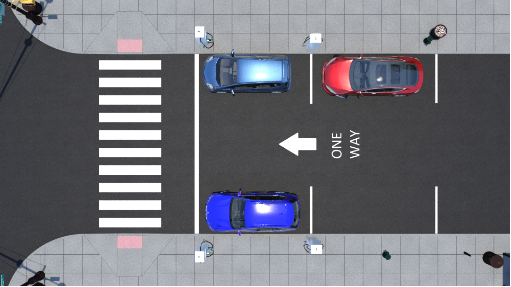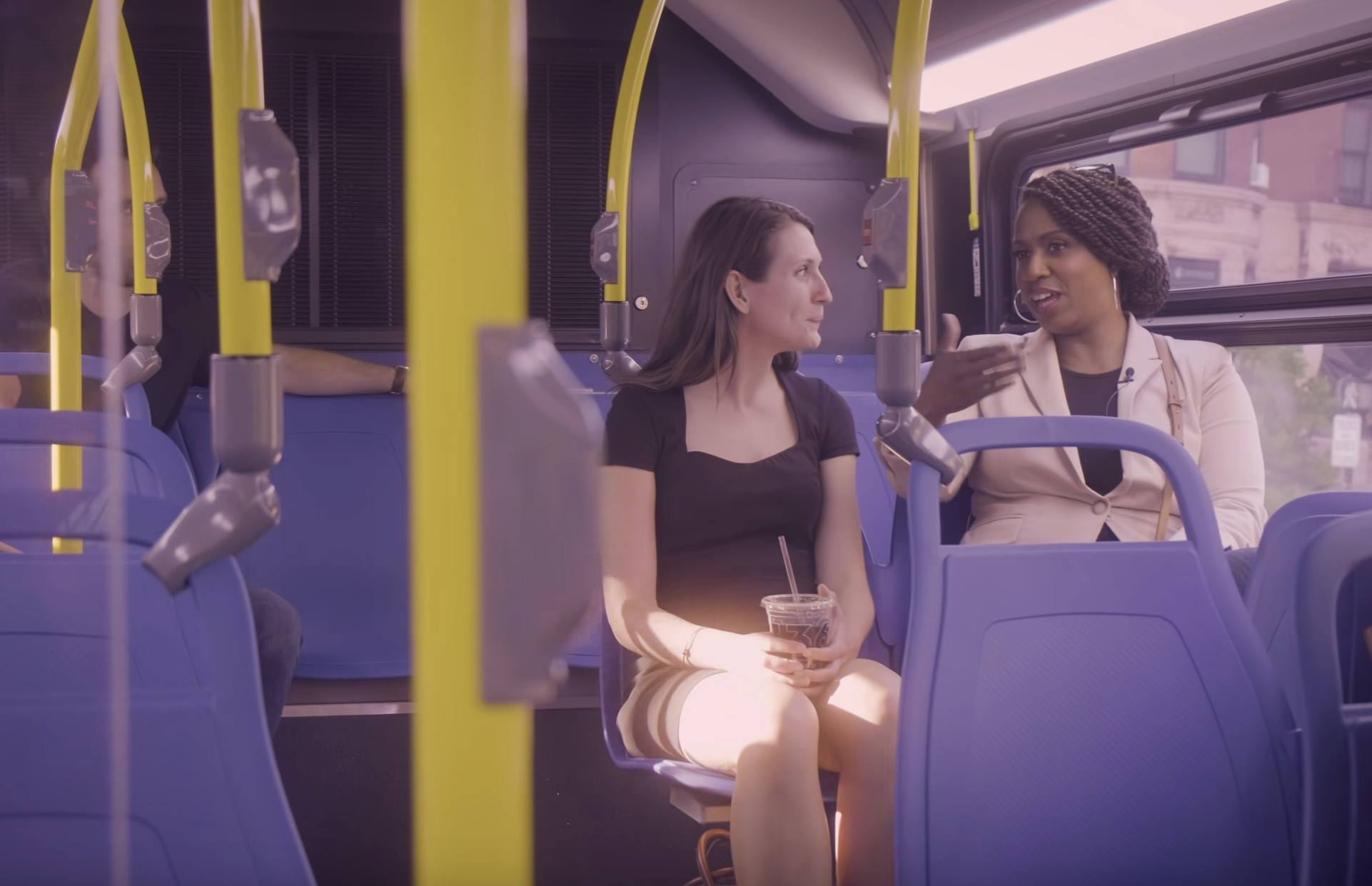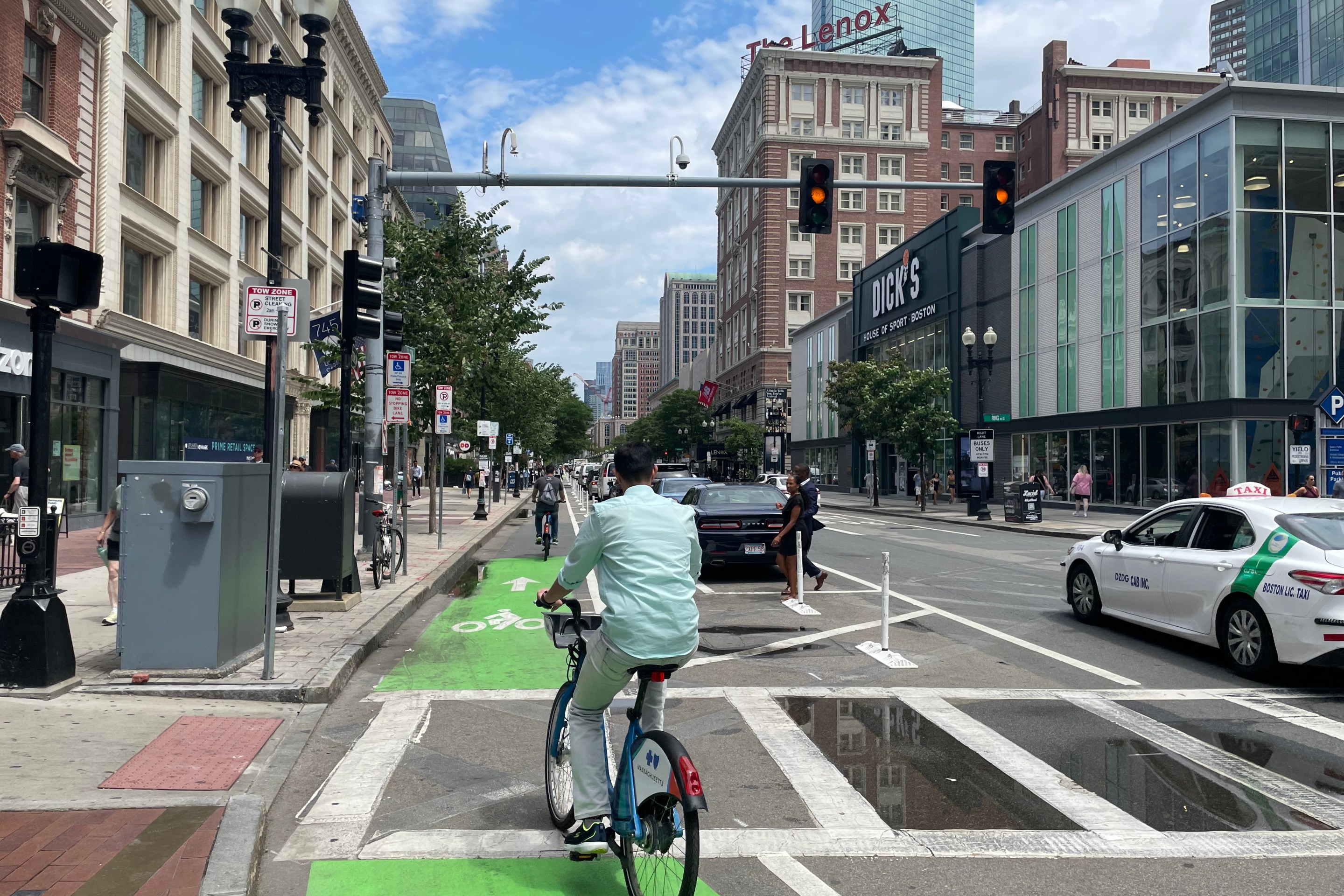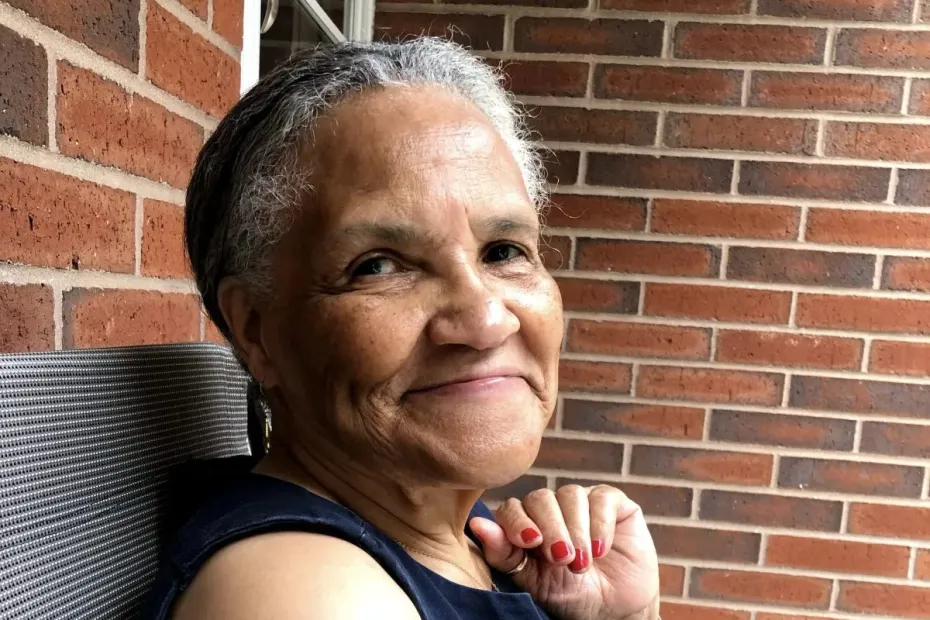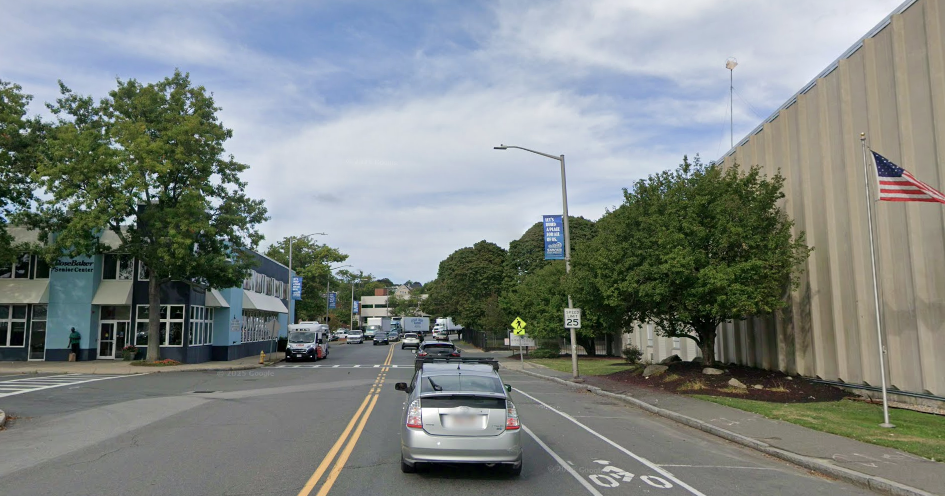In the race to add more electric car charging stations to city streets, Cambridge and Boston are taking steps to ensure the new infrastructure includes access for people with disabilities, despite a lack of well-established standards.
This September, the Biden-Harris administration announced the first round of states to receive funding to expand electric vehicle (EV) charging infrastructure under the National Electric Vehicle Infrastructure (NEVI) program in an effort to “help build a convenient, reliable, and affordable EV charging network across the country.”
Massachusetts, one of the 39 states announced in the first round of funding, expects to collect $63 million from the program over the next five years.
Although the NEVI Program funding is geared toward EV charging stations along highways, the magnitude of the funding demonstrates the momentum behind building out this infrastructure network.
Massachusetts has adopted a mandate for car dealers to sell only electric vehicles by 2035, and several municipalities – including Boston and Cambridge – have embraced their own local goals to encourage more battery-powered vehicles.
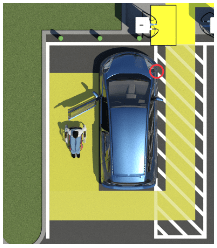
Despite the surge in federal funding and interest from municipalities, standards for EV charging stations that accommodate people with disabilities haven’t been set, and are still being developed at a national level.
“At present, there are no federal regulations specifying accessibility requirements for EV charging stations to ensure that they are accessible to and usable by persons with disabilities,” according to a spring 2022 document from the U.S. Access Board, an independent federal agency that promotes equality for people with disabilities through leadership in accessible design and the development of accessibility guidelines and standards.
In July, the Access Board published Design Recommendations for Accessible Electric Vehicle Charging Stations, which it describes as “technical assistance to help regulated entities design and install EV charging stations that are accessible to and usable by people with disabilities.”
The 38 page document details several guidelines – which are not legally binding. Among them:
- A vehicle charging space should be at least 11 feet wide and 20 feet long. Different makes and models have different plug placements, so these space guidelines provide someone with enough space to make their way to the charging port, no matter which side it's on.
- An adjoining access aisle at least 5 feet wide.
- Clear floor or ground space at the same level as the vehicle charging space and positioned for an unobstructed side reach.
- Accessible operable parts, including on the charger and connector.

Because accessibility goes beyond physical infrastructure like ramps, the document also includes recommendations for accessible communication features, such as display screens with adjustable text size and high contrast.
While these standards are not required, Katherine Watkins, Acting Commissioner of the Cambridge Department of Public Works, is glad to see accessibility discussions taking place at the national level.
“Cambridge is looking to these recommendations as best practices for the EV charging program,” Watkins told StreetsblogMASS in an email message.
The City of Cambridge has chargers available across 11 city-owned locations and is focused on adding more, particularly for folks who may not have a driveway or garage at their homes.
In a January presentation, the City of Cambridge shared plans for a pilot program to add curbside charging stations on residential streets to “help break down barriers to EV adoption.”
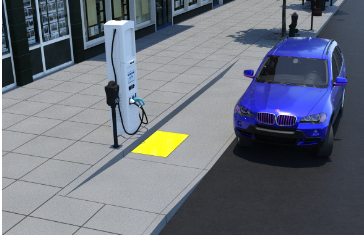
“We are in the process of installing four charging stations on residential streets that will support charging 8 vehicles. These are the first on-street chargers in Cambridge,” Watkins told StreetsblogMASS.
Of the eight new on-street charging spots, four will be accessible, and will be installed at the following locations:
- Tudor Street
- Norfolk Street
- Pemberton Street
- Upland Road
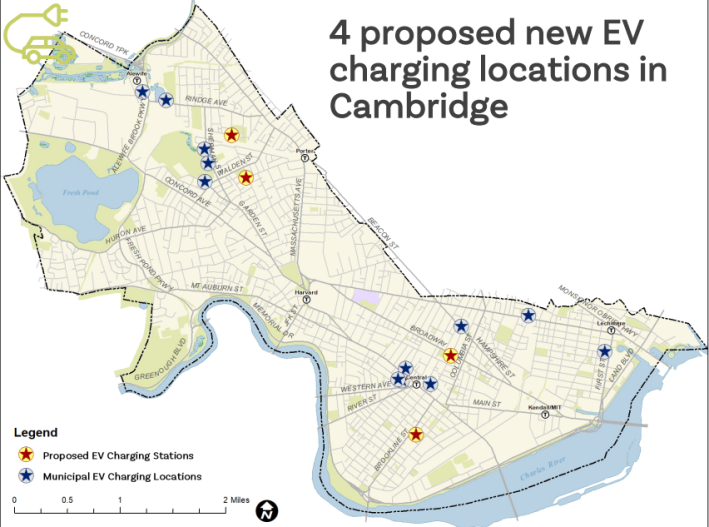
“The goal is to provide more distributed charging stations throughout the City and help support the expansion of EVs, particularly for residents that do not have access to charging at their place of residence,” added Watkins.
“As the locations come on line, we will be conducting follow up reviews with the (Commission for Persons with Disabilities) to evaluate how the different approaches are working and what should be considered for future installations.”
Over in Boston, a spokesperson with the Mayor’s Commission for Persons with Disabilities emphasized the connection between climate change and the disproportionate impact on people with disabilities.
“Many disabled drivers especially want to drive sustainable cars that decrease our dependence on fossil fuels because of their unique vulnerability to the effects of climate change,” wrote the spokesperson in an email to StreetsblogMASS. “This is why it is so important that EV charging stations be accessible to people with disabilities.”
The spokesperson added that “the (City of Boston) has also made an effort to install EV charging stations adjacent to accessible parking spaces, or near parking spaces that have access aisles, even if they aren’t dedicated Accessible Parking spaces.”
Some of these locations can be found in municipal lots in Jamaica Plain, Roslindale, Hyde Park, and Nubian Square.
“The Disabilities Commission, the Transportation Department, and the Public Works Department are working diligently to ensure that these regulations are integrated into all future work.”
